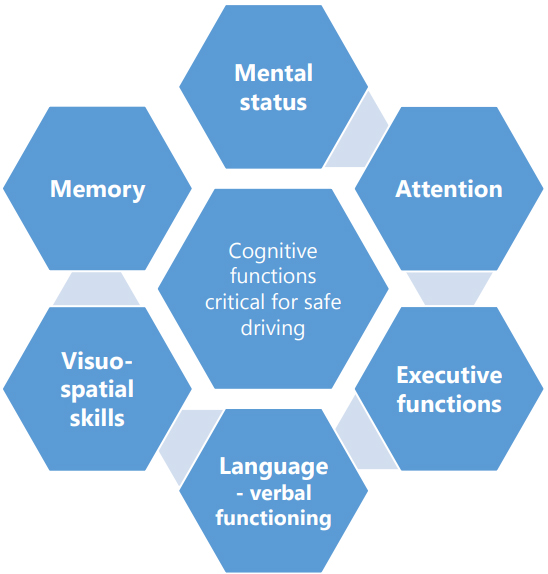
The objective of this study is to examine and present the most critical parameters that can assess and predict the driving performance of individuals having some kind of cerebral disease. The cerebral diseases that have been studied are: Mild Cognitive Impairment (MCI), Alzheimer’s disease (AD) and Parkinson’s disease (PD). For that purpose an extended literature review was extracted in order to investigate the critical parameters which are examined in the scientific field of driving performance of drivers with brain pathologies. Methods of assessing driving, including on-road driving experiments, driving simulator experiments, neurological and neuropsychological tests etc., and related results of the literature are presented and assessed. Initially, the role of neurological and neuropsychological tests in assessing driving behaviour of patients with cerebral diseases is examined. Then, the role of on-road assessments and the role of driving simulator experiments, in evaluating the driving performance are thoroughly investigated. Twenty-eight studies examining driving parameters that could predict and assess the driving performance of patients suffering a brain pathology (MCI, AD and PD) are reviewed. All these studies concern recent research and report quantitative results. In this framework, the respective driving performance measures are recorded with the aim to investigate which ones are the most promising and in which way they are analyzed. Overall, the critical driving performance measures in which the group of patients with cerebral diseases had significant differences from the control group, were: driving errors, speed, lateral position, reaction time, accident risk, headway distance, left turns, and time to collision. However, the diversity in the measures used, in combination with the diversity in the design of the experiments (i.e. road/traffic factors examined, number/duration of trials) often complicates the synthesis of the results. In conclusion, the analysis of the driving performance of drivers with cerebral diseases may allow the identification of measures that can improve driving safety, such as restrictive measures, training and licensing, information campaigns, medical and neuropsychological monitoring.
| ID | pc246 |
| Presentation | |
| Full Text | |
| Tags | cognitive impairment, driver behaviour, older drivers |













